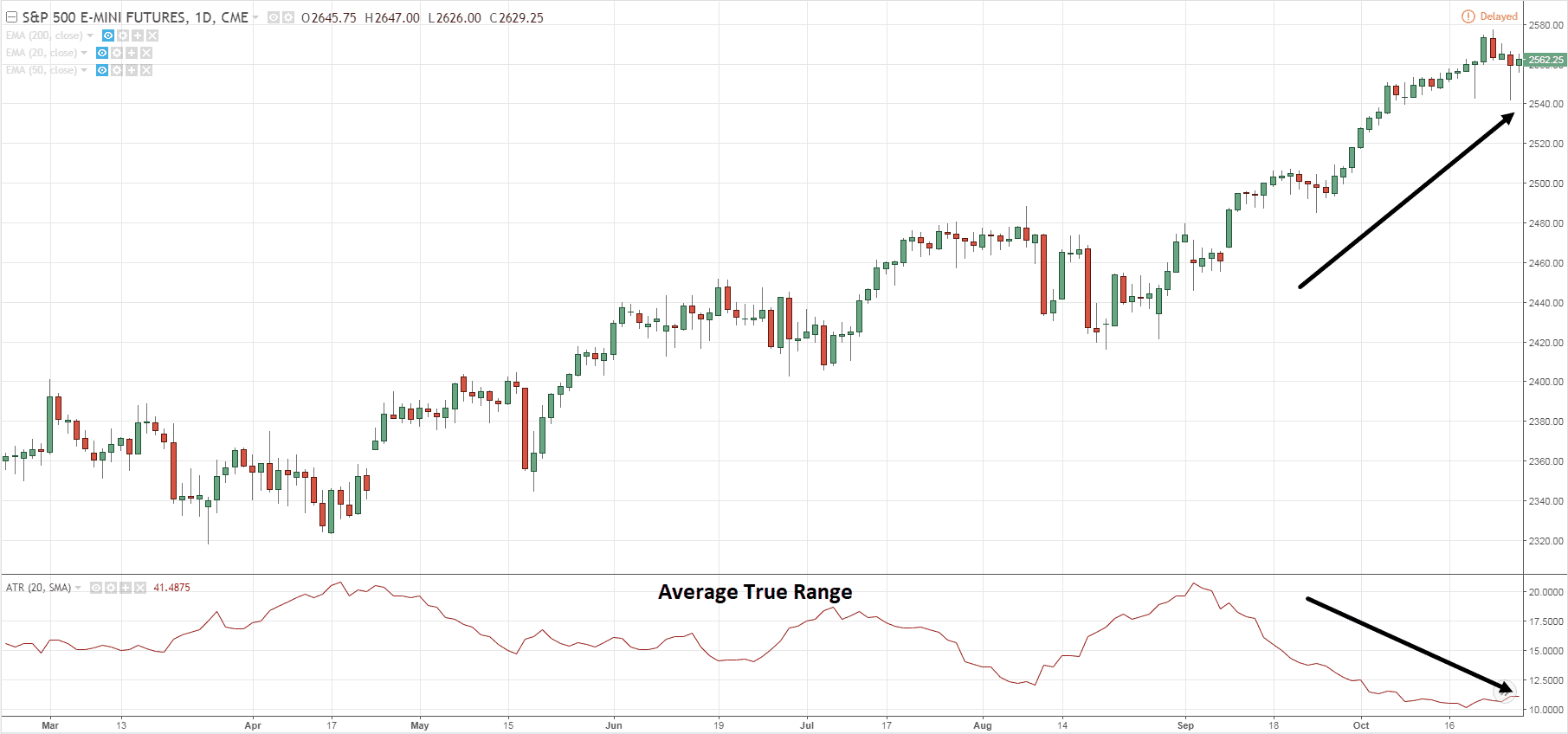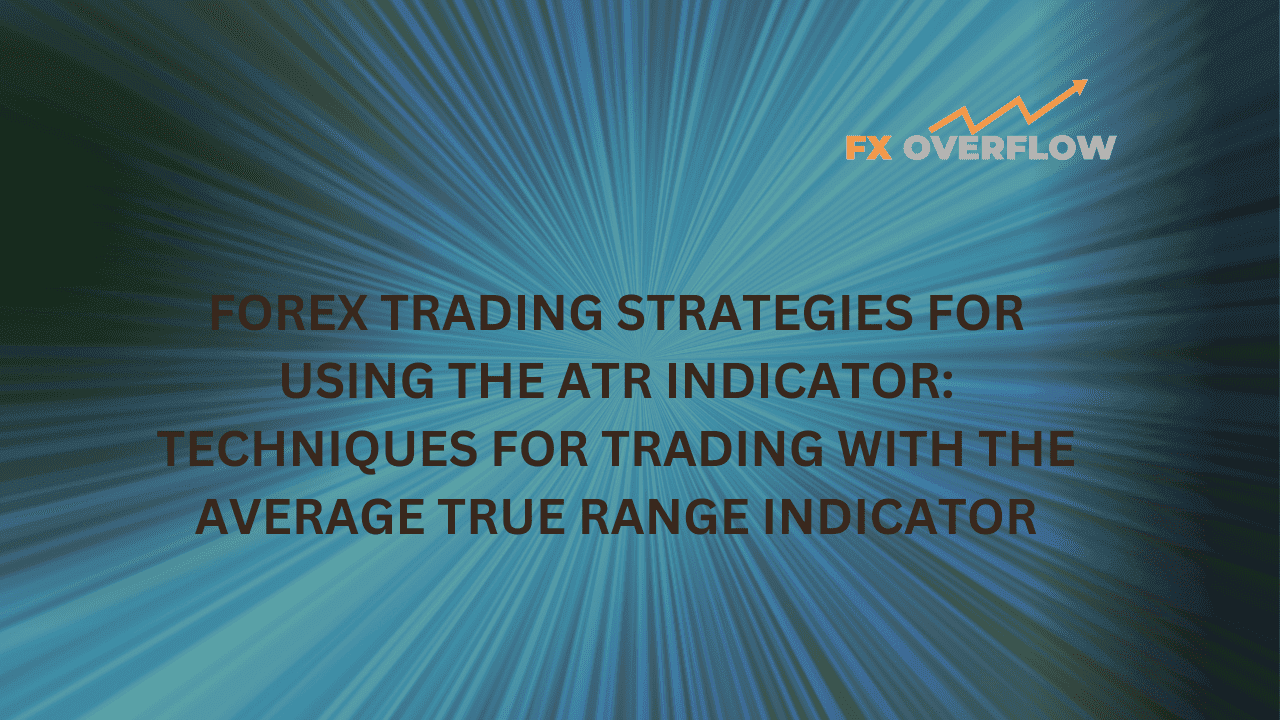Forex Trading Strategies Using the ATR Indicator: Techniques for Trading with the Average True Range Indicator
In the fast-paced world of Forex trading, where volatility can make or break a trade, having the right tools and strategies at your disposal is essential. One such tool that has gained significant popularity among traders is the Average True Range (ATR) indicator. The ATR indicator is a versatile tool that can provide valuable insights into market volatility, helping traders make more informed decisions. In this article, we will delve into the various Forex trading strategies that utilize the ATR indicator to enhance trading outcomes.

Table Content
1. Understanding the Average True Range (ATR) Indicator
2. Volatility Breakout Strategy
3. ATR as a Filter for Entry and Exit Points
4. ATR as a Trailing Stop
5. ATR in Conjunction with Other Indicators
6. Footnote:
Understanding the Average True Range (ATR) Indicator
Before we explore specific trading strategies, it's crucial to understand the ATR indicator's mechanics. Developed by J. Welles Wilder Jr., the ATR indicator doesn't predict price direction but focuses on market volatility. It measures the average range between the high and low prices of an asset over a specified period. In simple terms, it gauges how much an asset's price can potentially move within a given timeframe.
The ATR is not expressed in terms of currency or percentage but rather in the actual price units of the asset being traded. For example, if the ATR value is 0.50, it implies that, on average, the price moves 50 pips within the selected time period.
Volatility Breakout Strategy
One of the most popular ways to utilize the ATR indicator is through a volatility breakout strategy. This strategy capitalizes on periods of increased market volatility, attempting to catch significant price movements. Here's how it works:
- Identify Volatile Periods: Begin by identifying periods of heightened volatility using the ATR indicator. When the ATR value is significantly higher than usual, it indicates a potentially explosive price movement.
- Set Entry and Exit Levels: Once you've identified a volatile period, set entry and exit levels. For long trades, enter slightly above the recent high, and for short trades, enter slightly below the recent low.
- Place Stop-Loss and Take-Profit Orders: To manage risk, place a stop-loss order a few pips below the entry level for long trades and above for short trades. Take-profit orders can be set at a multiple of the ATR value to capture a reasonable profit while considering market volatility.
- Trail Stop: As the trade progresses in your favor, consider trailing the stop-loss order using the ATR indicator. This way, if the price reverses, you'll lock in profits as the trade moves in your intended direction.
ATR as a Filter for Entry and Exit Points
The ATR indicator can also serve as an excellent filter for determining suitable entry and exit points for trades. This approach helps traders avoid entering or exiting trades during periods of low volatility when price movements are limited. Here's how to implement this strategy:
- Establish ATR Threshold: Determine a threshold value for the ATR indicator. This value will act as the minimum level of volatility required for a trade to be considered.
- Confirm Entry Signals: When a trading signal is generated, such as a moving average crossover, ensure that the current ATR value is above the established threshold. This confirmation ensures that the market is active enough to potentially result in a favorable price movement.
- Exit during Low Volatility: Similarly, when considering an exit, use the ATR indicator to confirm that the market volatility is still above the threshold. Exiting during periods of low volatility could result in premature exits and missed profit potential.
ATR as a Trailing Stop
Trailing stops are an integral part of effective risk management in Forex trading. By adjusting your stop-loss level as the trade moves in your favor, you can secure profits while still giving the trade room to breathe. The ATR indicator can be employed to dynamically adjust the trailing stop distance based on market volatility.
- Determine ATR Multiplier: Decide on a suitable multiplier (e.g., 2 or 3) to multiply the current ATR value. This multiplier will determine the distance of the trailing stop from the current price.
- Trail with ATR: As the trade progresses favorably, calculate the trailing stop distance using the ATR multiplier. For example, if the ATR value is 0.75 and the multiplier is 2, the trailing stop would be set at 1.5 times the ATR value.
- Protect Gains: By using the ATR-based trailing stop, you allow the trade room to move while protecting your gains. If the price reverses, the trailing stop will trigger at a distance that accounts for the market's recent volatility.
ATR in Conjunction with Other Indicators
To enhance trading accuracy, many traders combine the ATR indicator with other technical indicators. One common approach is to use the ATR alongside a trend-following indicator, such as the Moving Average. Here's how this strategy can be applied:
- Identify Trend Direction: Use a trend-following indicator to identify the current trend direction—whether it's an uptrend or a downtrend.
- Confirm Volatility: Cross-reference the trend direction with the ATR indicator. Ensure that the ATR value aligns with the direction of the trend. Higher ATR values are preferable during uptrends, and lower ATR values can be considered during downtrends.
- Fine-Tune Entries and Exits: Utilize the ATR indicator to fine-tune entry and exit levels. During uptrends, consider entering trades when the ATR value suggests higher volatility, potentially leading to larger price movements. In downtrends, focus on lower ATR values to indicate a smoother price decline.
Footnote:
The Average True Range (ATR) indicator is a valuable tool for Forex traders seeking to better understand market volatility and enhance their trading strategies. By employing ATR-based techniques such as the volatility breakout strategy, using ATR as a filter for entry and exit points, utilizing ATR as a trailing stop, and combining ATR with other indicators, traders can make more informed decisions and manage risk more effectively. As with any trading strategy, it's important to practice these techniques in a demo account before implementing them in a live trading environment and to adapt them to your individual trading style and risk tolerance.











Discussion